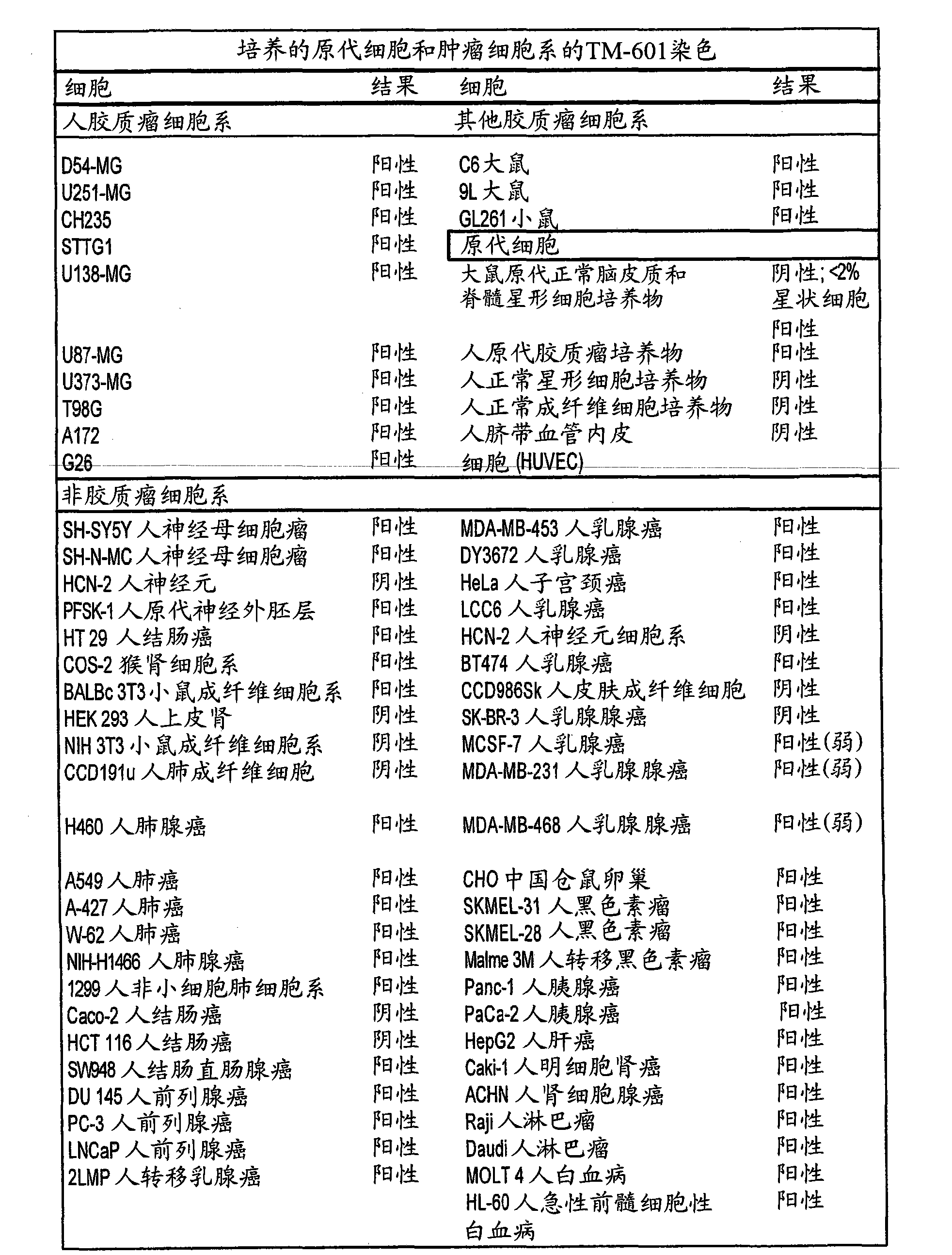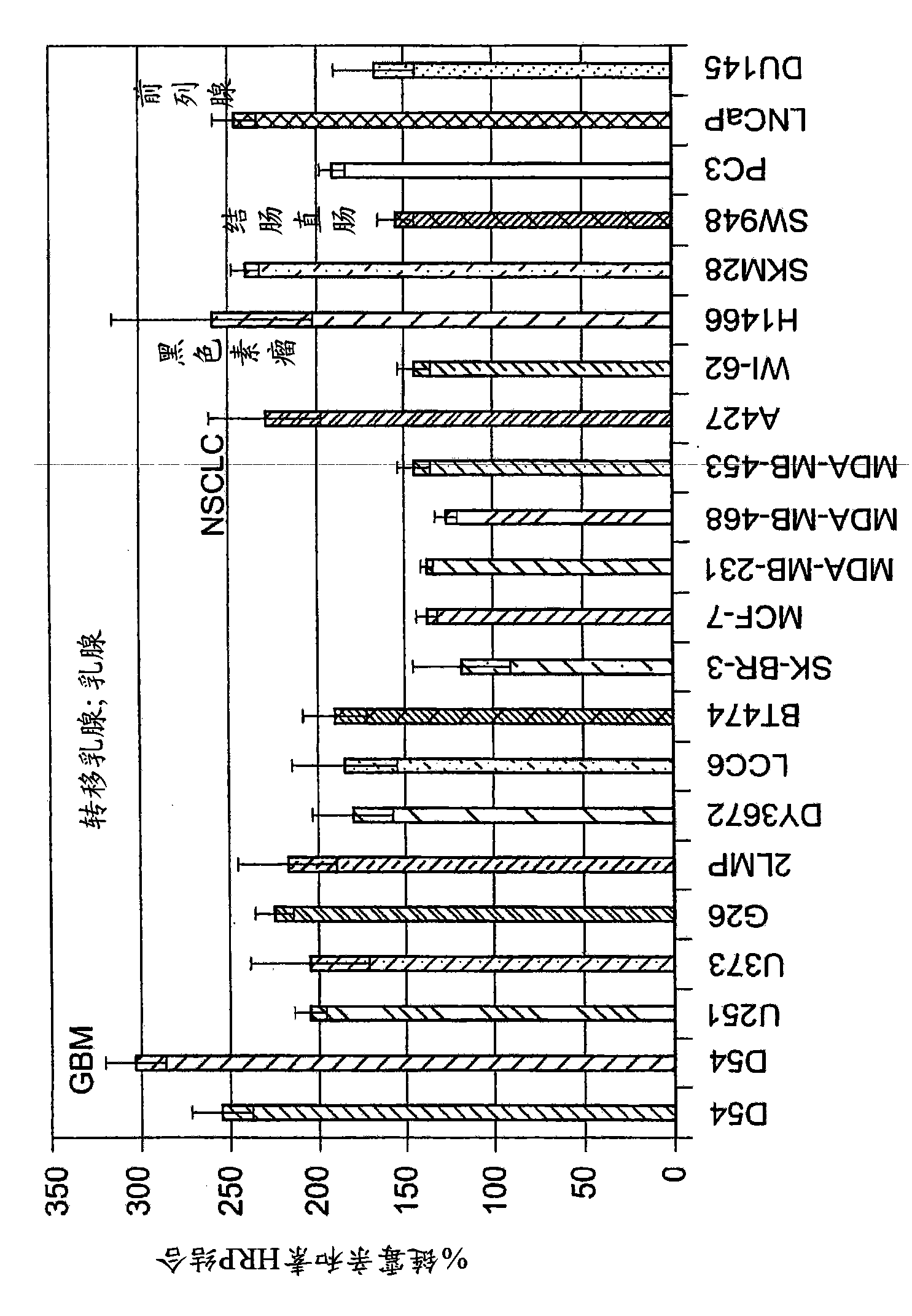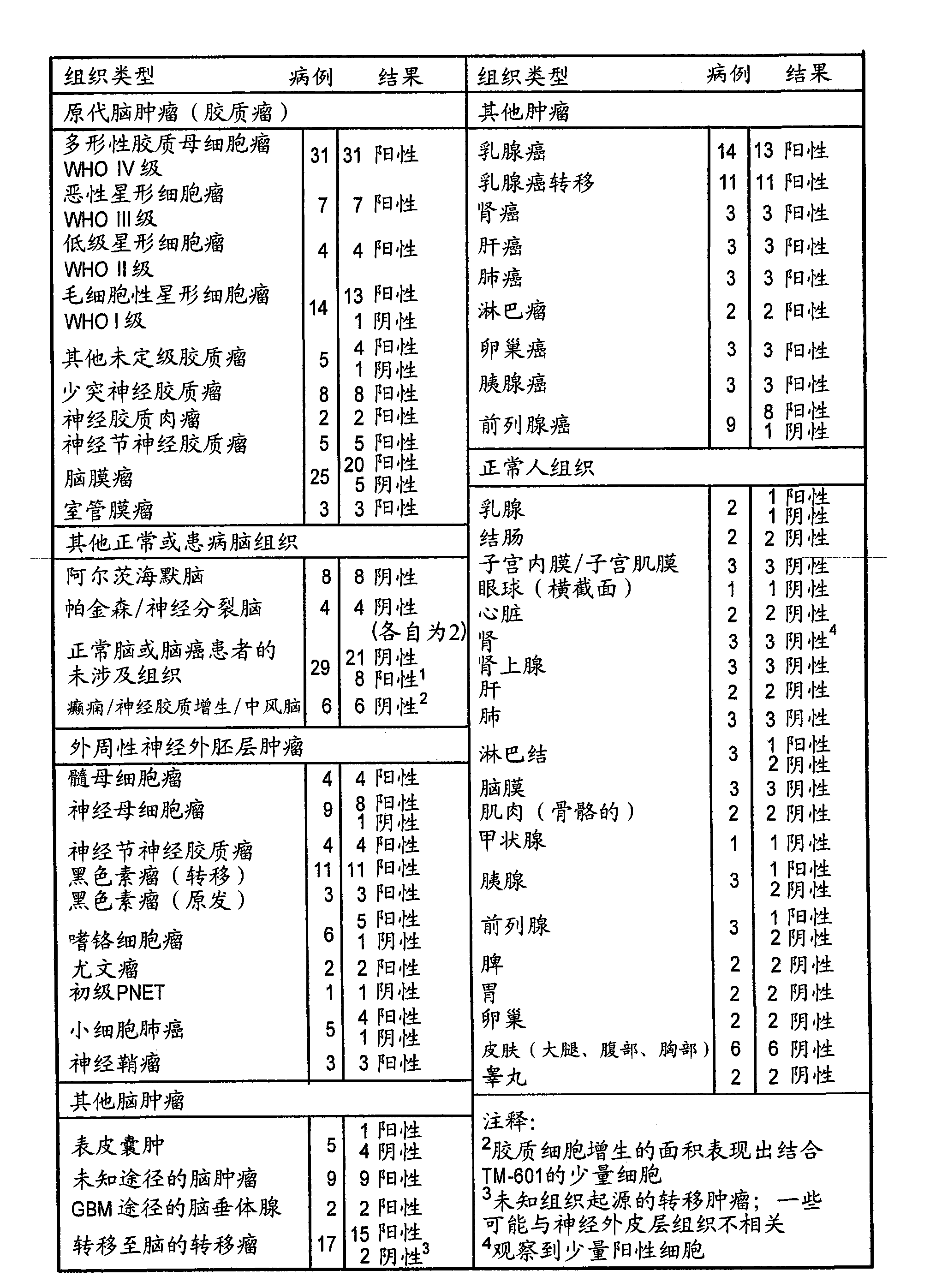Systemic administration of chlorotoxin agents for the diagnosis and treatment of tumors
A chlorotoxin, systemic technology, applied in antitumor drugs, digestive system, muscular system diseases, etc.
- Summary
- Abstract
- Description
- Claims
- Application Information
AI Technical Summary
Problems solved by technology
Method used
Image
Examples
Embodiment 1
[0165] Example 1: In Vitro Cell Binding of TM-601 and Biotinylated TM-601 (TM-602)
[0166] TM-601, a 36 amino acid peptide originally isolated from the venom of the Israeli golden scorpion (leiurus quinquestriatus), has been studied to bind to tumor cell lines and normal primary cell cultures. The obtained results further confirm the previous preliminary observation that TM-601 binds selectively to a variety of different tumor types. For human, rat, and mouse glioma (glioma, or glioma) cell lines, primary culture cells, and non-glioma cell lines, including those from humans, monkeys, rats, hamsters, and Those in mice were tested for TM-601 binding. In addition, a variety of non-glioma tumor lines, including, for example, those derived from lung, colon, prostate, and melanoma tumors, were also found to bind TM-601. In contrast, under the experimental conditions applied, a number of primary cultured cells (rat and human astrocytes) and nonglioma cell lines (human lung fibrobl...
Embodiment 2
[0170] Example 2: Unlabeled TM-601 does not reduce tumor cell growth in vitro
[0171] An in vitro cell line screen comprising 56 different human tumor cell lines representing leukemia, melanoma, and cancers of the lung, colon, brain, ovary, breast, prostate, and kidney was performed by the National Cancer Institute. Submit TM-601 to Screening Services. The results obtained indicated that TM-601 was not cytotoxic to any of the cell lines tested. As a follow-up experiment, a single cell line, Panc-1, was tested at a range of serum concentrations (10%, 5%, 2%, 1%) to determine whether cytotoxic activity was evident under low serum growth conditions. No significant cytotoxicity of chlorotoxin was observed, suggesting that the primary mechanism of action against chlorotoxin is not through direct cytotoxic effects on tumor cells.
Embodiment 3
[0172] Example 3: In Vitro Tissue Binding of Biotinylated TM-601
[0173] To perform histochemical staining studies using biotinylated TM-601 (TM-602) on fixed tissue embedded in paraffin or on frozen human biopsy (or biopsy) and / or autopsy (or autopsy) specimens Locate the TM-601 binding site on the slice. To date, more than 200 brain tumor biopsy and autopsy samples have been evaluated for TM-601 binding. Studies included gliomas, other malignancies, and non-neoplastic tissues. The results of this and subsequent studies are shown in image 3 middle.
[0174] In conclusion, almost all gliomas showed significant staining activity for TM-601, whereas normal, non-neoplastic tissues did not. The percentage of TM-601 positive cells within a given tumor varied from 50-98% and increased with increasing WHO malignant grade. An example of glioma-specific staining with TM-601 is shown in Figure 4 middle. In addition, all patient brain tumor tissue samples from the phase I clini...
PUM
| Property | Measurement | Unit |
|---|---|---|
| molecular weight | aaaaa | aaaaa |
Abstract
Description
Claims
Application Information
 Login to View More
Login to View More - R&D Engineer
- R&D Manager
- IP Professional
- Industry Leading Data Capabilities
- Powerful AI technology
- Patent DNA Extraction
Browse by: Latest US Patents, China's latest patents, Technical Efficacy Thesaurus, Application Domain, Technology Topic, Popular Technical Reports.
© 2024 PatSnap. All rights reserved.Legal|Privacy policy|Modern Slavery Act Transparency Statement|Sitemap|About US| Contact US: help@patsnap.com










